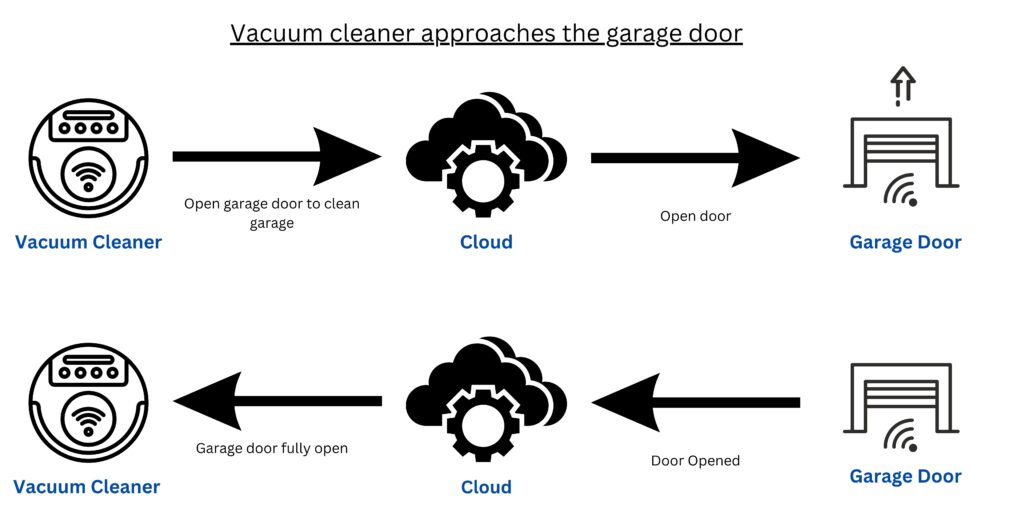In a prior article, I delved into the Myths and Realities of Digital Transformations, emphasising that the core of these transformations lies in how organisations leverage technology to fundamentally change the way they operate. This places organisations under pressure to quickly adopt and integrate different technologies. One of the most prominent technologies is, without any doubt, the Internet of Things (IoT).
What is IoT?
A Simple Definition
The Internet of Things (IoT) is ‘simply’ the interconnection of several different devices over the internet, including, for example, vehicles, vacuum cleaners, and even refrigerators. Instead of solely performing their conventional task, these devices can share information and communicate with each other through the internet.
How does IoT work?
IoT begins with devices using sensors, including, for example, traditional infrared sensors, touch screens, and any other smart technology, to read and gather data. Subsequently, they are able to transmit the collected data to a central hub or a cloud platform, where data is stored, analysed, processed, monitored, or even automatically transmitted to another device.
Consider, for instance, a scenario where a vacuum cleaner communicates seamlessly with an automatic garage door.


This example shows a connected environment where devices communicate and coordinate their actions based on predefined conditions. Particularly, it demonstrates:
- Interconnectivity between two distinct devices, each designed for entirely different tasks.
- Automation based on signals and predefined conditions.
- Communication over the internet through a cloud platform that serves as an intermediary for data exchange between the vacuum cleaner and automatic garage door.
- Element of feedback loop, which is a key aspect of IoT.
How does IoT support Digital Transformations?
Through the use of IoT’s connectivity abilities, organisations can now more easily create a cohesive and integrated digital ecosystem. Furthermore, with an immense influx of real-time data, IoT enables this digital ecosystem to make automated, informed, data-driven decision – tasks, that would have taken days, if not weeks or months, to be accomplished manually before the introduction of IoT. All of this may also lead to operational and supply chain efficiencies.
Eventually, this intelligence serves as a key pillar for Digital transformations to adopt a customer-centric approach in all aspects of their operations. For example, the integration of interconnected systems and devices allows organisations to promptly offer personalised, real-time services based on actions taken just seconds before.
5 Tips for Integrating IoT in Digital Transformations
1. Start with a Clear Strategy!
With the endless possibilities that IoT brings to the table, it is easy for organisations (especially the tech savvy ones), to get carried away and start integrating IoT with their products and services. This enthusiasm may lead the organisation to invest in IoT solutions that do not align with their specific needs and long-term vision. As a consequence, they will experience lower-than-expected ROIs, inefficient resource allocation and missed opportunities.
Therefore, a strategic roadmap is critical to ensure alignment with the organisation’s bigger picture while maintaining a focused approach.
2. Prioritise Security and Privacy
Organisations face constant scrutiny regarding the type of data they collect, store, and share with third parties. Also, security breaches have drastic reputational and financial impact on organisations, making security a paramount factor that needs to be considered in IoT implementations.
3. Build Scalable, and Interoperable Infrastructure
Instead of hastily expanding the organisation’s product and service capabilities – for example, through the purchase and integration of off-the-shelf third-party systems – it is crucial for organisations to keep in mind that the IoT ecosystem will continue to grow. Without a pre-planned scalable infrastructure, organisations will, in the long run, end up with a much more complex, challenging, and costly integrations when adding more capabilities to their product offering. Maintenance of all the different systems will also become a nightmare.
4. Leverage Data Analytics
Far too often, organisations integrate IoT capabilities into their service offering, feel proud of the new capabilities, and stop there!
However, considering that IoT generates vast amounts of data, organisations should channel their efforts into a thorough analysis of the collected data to extract maximum value from the integration and investment. Insights gained from such analysis will likely lead to further optimisation and innovative opportunities.
5. Involve Stakeholders and Prioritise Training
Given that the integration of IoT into an organisation’s operations may change how employees interact and carry out their work, it is worth assuming a certain level of resistance to change.
The same caution must be extended to external customers. By offering, through IoT, new capabilities to their products and services, organisations cannot assume universal customer acceptance, particularly from those hesitant to share certain information about themselves or their actions.
Organisations should therefore avoid undervaluing the investment needed for training their workforce and customers. Instead, they need to ensure an adequate effort and investment are allocated to achieve a widespread understanding and acceptance of the changes brought about by IoT integration.
In conclusion, it is evident that the integration of IoT with Digital transformations encompasses more than just technology integration. It also requires ethical and social considerations, robust policies (such as data and security policies), coupled with a mindset committed to continuous monitoring and optimisation.
Collectively, these elements ensure that organisations persistently strive for excellence, fostering a dynamic environment where technological advancements aligns seamlessly with ethical principles – keeping in mind that this integration is not a one-time event, but an ongoing commitment.
I’m Jonathan Spiteri, and I bring a wealth of experience in innovation, strategy, agile methodologies, and project portfolio management. Throughout my career, I’ve had the privilege of working with diverse teams and organisations, helping them navigate the ever-evolving landscape of business and technology. I’ve also earned multiple prestigious certifications, such as Axelos Portfolio Director, SAFe® 6 Practice Consultant, Organisation Transformation, Project Management Professional (PMP), TOGAF 9.2, and Six Sigma Black Belt. These qualifications reflect my dedication to achieving excellence and my proficiency across various domains.


